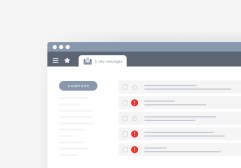Maximizing Revenue: Dynamic Pricing Strategies for Innovative Offerings
In today’s competitive market, new products and services must not only offer value but also be priced wisely to maximize revenue. Dynamic pricing strategies can help businesses adjust their prices based on market demand, competition, and customer behavior. This article will explore various dynamic pricing strategies that can effectively elevate your innovative offerings.
Understanding Dynamic Pricing
Dynamic pricing is a flexible pricing strategy where the price of a product or service is adjusted in real-time in response to market conditions. Unlike fixed pricing, which remains constant regardless of demand fluctuations, dynamic pricing allows businesses to capitalize on high demand periods and optimize their revenue potential. This approach is commonly used in industries like travel, hospitality, and e-commerce where consumer behavior can change rapidly.

Key Dynamic Pricing Strategies
Several key strategies fall under the umbrella of dynamic pricing: 1) **Time-Based Pricing** adjusts prices based on the time of purchase; for instance, offering lower rates during off-peak hours. 2) **Demand-Based Pricing** increases prices when demand exceeds supply—think concert tickets that rise as seats sell out. 3) **Competitive Pricing** involves setting prices based on competitors’ rates to attract customers while remaining profitable.
Implementing Psychological Pricing Techniques
Psychological pricing plays a vital role in how consumers perceive value. Techniques such as charm pricing (e.g., $9.99 instead of $10) or anchoring (presenting a higher-priced item next to a new product) can influence purchasing decisions significantly. By understanding customer psychology and perception of price fairness, businesses can implement these techniques within their dynamic pricing strategy to enhance sales.
Leveraging Technology for Price Optimization
The advent of advanced analytics and machine learning has made it easier for companies to implement effective dynamic pricing strategies. Tools that analyze historical sales data and consumer behavior patterns allow businesses to make informed decisions about price adjustments in real-time. Using algorithms that forecast demand can enable companies not only to remain competitive but also anticipate market shifts before they happen.
Testing and Adjusting Your Strategy
Once you’ve developed a dynamic pricing strategy, it’s essential to test its effectiveness continuously. A/B testing different price points with segments of your audience can provide valuable insights into what works best without alienating potential customers. Monitoring results over time will help you refine your approach and ensure long-term success while maximizing revenue from your innovative products or services.
In conclusion, implementing dynamic pricing strategies can significantly enhance your ability to maximize revenue for new products or services while adapting quickly to changing market conditions. By understanding customer psychology, leveraging technology for optimization, and continuously testing your approach, you will position your business for sustained growth and profitability.
This text was generated using a large language model, and select text has been reviewed and moderated for purposes such as readability.











